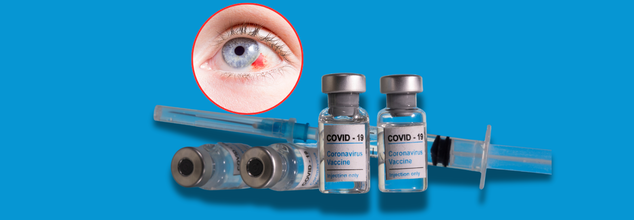- Health Conditions A-Z
- Health & Wellness
- Nutrition
- Fitness
- Health News
- Ayurveda
- Videos
- Medicine A-Z
- Parenting
- Web Stories
Over 2,000 Benadryl Bottles Pulled For Lacking Child-Resistant Packaging

Credit: Canva
Thousands of bottles of liquid Benadryl are being recalled in the United States due to a critical safety issue—absence of child-resistant packaging. The United States Consumer Product Safety Commission (CPSC) has announced that Arsell Inc., a Brooklyn, New York-based company, is voluntarily recalling the affected batch of allergy medication. The decision stems from the fact that the product contains diphenhydramine, a drug that must legally be packaged in child-resistant containers under the Poison Prevention Packaging Act (PPPA).
According to the CPSC, “The packaging of the products is not child-resistant, posing a risk of poisoning if the contents are swallowed by young children.” This warning highlights the serious risk that even a small amount of diphenhydramine can pose to a child, potentially leading to accidental poisoning if the medicine is ingested.
What Is Benadryl and Why Is It Used?
Benadryl Syrup is commonly used to treat cough and a variety of allergy symptoms. It helps relieve conditions such as runny nose, sneezing, watery eyes, congestion, and stuffy nose. In addition, the syrup works by thinning mucus in the nose, lungs, and windpipe, making it easier to cough out. The active ingredient, diphenhydramine, is an antihistamine that also induces drowsiness, making it helpful for managing nighttime allergy symptoms.
Details of the Recall
The recall specifically affects 2,300 bottles of Benadryl Liquid Elixir, each containing 100 mL of the product. These bottles are packaged in a round, dark plastic container with a pink and white label that prominently displays the word “Benadyl” in blue font. The product, manufactured in Canada, was sold in a paper box and includes a white label on the bottom of the box with the code “X003VRIGUL” printed in black text. This specific code helps customers identify whether they have purchased the affected product.
What Should Consumers Do Now?
If you’ve recently purchased a bottle of Benadryl and it matches the description of the recalled product, it's important to act immediately. While the company is offering refunds to affected customers, health experts strongly advise that consumers dispose of the product without delay. The risk of keeping the medication in a non-childproof bottle outweighs the benefits of holding onto it. Children are naturally curious, and if they gain access to the syrup, it could lead to accidental poisoning—a potentially life-threatening situation.
The recall serves as an important reminder about the significance of child-resistant packaging, especially for medications that contain potent ingredients. In households with young children, even everyday over-the-counter products can become hazardous if not stored or packaged correctly.
Consumers who are unsure about whether their product is part of the recall can contact Arsell Inc. for more information and assistance with processing refunds. Meanwhile, the CPSC continues to work with manufacturers to ensure that all drug packaging complies with federal safety standards designed to protect the most vulnerable members of society—young children.
Canadian Swimmer, Penny Oleksiak Handed Provisional Suspension Over Anti-Doping Violation, 'I Am Clean,' She Says

Credits: Olympics.com, Canadian Olympic Committee, Wikimedia Commons
In the chain of news where many sports persons have been pulled up due to their anti-doping results, including Jannik Sinner, Tara Moore, and Ruth Chepngetich, Canadian swimmer Penny Oleksiak has also made news. Though her case differs, as she has been notified of an apparent anti-doping rule violation by the International Testing Agency (ITA).
As per ITA, Oleksiak committed three whereabout failures within a 12-month period between October 2024 and June 2025. Oleksiak of Toronto, who is a three-time Olympian, has accepted a voluntary provisional suspension pending the resolution of the matter.
The ITA gives her the right to explain why she had missed three whereabouts. In a now-deleted Instagram post, Oleksiak announced that she was withdrawing from the world championship and accepting a voluntary provisional suspension. Her post read: "I am and always have been a clean athlete". The post also noted that the case "does not involve any banned substance; it's about whether I updated my information correctly."
Swimming Canada also agreed and wrote: "We support her decision and believe she is a clean athlete who made an administrative mistake."
What Is A Whereabouts Case?
As per the World Anti-Doping Agency (WADA), whereabouts is information provided by athletes so Anti-Doping Organizations (ADO) can locate them for testing, particularly for out-of-competition testing.
Athletes who need to provide whereabouts information are usually part of a Registered Testing Pool (RTP).
A Whereabouts case is considered an anti-doping rule violation and can impact an athlete's eligibility, even if they haven’t used any banned substances. According to the World Anti-Doping Code, it involves any combination of three missed tests or filing failures within a 12-month period. According to World Aquatics, if an athlete in the testing pool submits "late, inaccurate or incomplete whereabouts that lead to [them] being unavailable for testing, [they] may receive a Filing Failure."
What Information Is Required For A Whereabout Case?
As per WADA, the RTP athletes are required to provide the following information to ADO:
- Home address, email address and phone number
- An overnight accommodation address
- Regular activities, such as training, work, school or University and their locations plus times they will be there
- Competition schedules including when they are taking place and where
- A 60-minute time slot for each day where they’ll be available and accessible for testing
What Are The Common Drugs Used By Swimmers?
As per the Anti-Doping Database, top three banned substances for swimmers are cannabis, methylhexaneamine, and nandrolone.
Surprisingly, cannabis is the top contender of all. It is most commonly detected substance among banned swimmers and is not an Anabolic Steroid, which are a class of drugs that are structurally linked to testosterone, which helps in muscle building. Cannabis is a cannabidiol. As per the data, swimmers from France comprise the largest group testing positive for this substance, followed by Italy, Spain, and Belgium.
"While investigations of whole cannabis and THC have generally shown either null or detrimental effects on exercise performance in strength and aerobic-type activities, studies of sufficient rigor and validity to conclusively declare ergogenic or ergolytic potential in athletes are lacking," notes a 2021 Study, published in Springer's Sports Medicine.
The second most common banned substance is Methylhexaneamine. It has resulted in bans for swimmers from Russia, India, and Poland. As per the National Library of Medicine, National Center for Biotechnology Information, USA, it is an amphetamine derivative that has been widely used in sports supplements sold in the United States. It was placed under the WADA prohibition list in 2010 and is classified as a Non Specified Stimulant prohibited in-competition only. It is also a performance-enhancing substance.
Nandrolone, an Anabolic Steroid, notes the Anti-Doping Database, secures the third spot among top banned substances in summing. Athletes from Brazil, India, and Greece have tested positive for Nandrolone, a substance long associated with sports doping.
A 2020 study published in journal Medicina, notes, that skeletal muscle "can be" considered as the primary target tissue for nandrolone's effects. It can also increase muscle size and could be administered via injections, and is "metabolized in a similar manner to testosterone".
Baseball Hall of Famer, Ryne Sandberg Shares Update On His Prostate Cancer Relapse

Credits: Wikimedia Commons and Canva
Baseball Hall of Famer Ryne Sandberg, who has been diagnosed with prostate cancer shared an update about his health on Wednesday. He talked about his battle with prostate cancer.
Sandberg, 65, was diagnosed in January 2024 and in August, he announced that he was cancer-free. However, yet again, in December, not only had the cancer recurred, but it also spread to other organs.
In his recent post, he wrote: "I wanted to share an update regarding my health. It’s been a challenging few months as I have been going through treatment on a regular basis. While I am continuing to fight, I’m looking forward to making the most of every day with my loving family and friends."
He also noted that now that the cancer is back, his focus will be "back to more intensive treatment."
He also wrote about his first pitch at the Chicago Cubs home opener in April, "I haven’t been to Wrigley Field as much as I hoped in the first half, but I’m watching every game and am excited for the second half and to see Wrigley rocking like 1984! Thank you all for the messages of support. Go Cubs!"
How To Know If Prostate Cancer Has Returned?
As per the Prostate Cancer UK, recurrent prostate cancer is when your cancer comes back after you had a treatment that aimed to cure it. It is also known as prostate cancer recurrence or relapse.
While several treatments aim to get rid of prostate cancer, however, sometimes, it could be a cancer advanced than the first one and may not have been treated successfully.
A prostate specific antigen (PSA) test is a common test recommended for anyone who has had a prostate cancer, or may be diagnosed for the same. Even if you beat the cancer previously, this test is recommended as a regular, preventative medical examination, and post-cancer care. Usually, the first sign that your cancer has returned is a continuous rise in the level of PSA in your blood. While this test cannot show for certain if prostate cancer has come back, it can sign that cancer may have come back.
Other than that, symptoms like extreme fatigue, bone pain, and problems urinating are common for a prostate cancer relapse.
Where All Could Your Prostate Cancer Come Back?
Your prostate cancer could come back in the following area:
- In your prostate if it was not removed by surgery
- In the area around your prostate, where the prostate used to be, also called the prostate bed
- In the area just outside your prostate
- In other parts of your body, including bones and lymph nodes
What Are The Second-Line Treatments Available?
Treatments to Eliminate Prostate Cancer
External Beam Radiotherapy
This treatment uses high-energy X-ray beams to target and destroy cancer cells. It can be given on its own or alongside hormone therapy.
Permanent Seed Brachytherapy
Tiny radioactive seeds are implanted directly into the prostate, where they slowly release radiation to kill cancer cells.
High Dose-Rate Brachytherapy
Thin tubes are inserted into the prostate, and a high dose of radiation is delivered for a few minutes through these tubes. The tubes are then removed.
Radical Prostatectomy (Surgery)
This involves surgically removing the prostate gland along with the cancer inside it.
High-Intensity Focused Ultrasound (HIFU)
HIFU uses focused ultrasound waves to heat and destroy cancer cells in the prostate. As a newer treatment option, it may not be widely available and is often offered only through clinical trials.
Cryotherapy
This method freezes and destroys cancer cells using extreme cold. Like HIFU, it’s a newer treatment and may only be accessible through clinical trials or at specialized centers.
Treatments to Manage or Control Prostate Cancer
Hormone Therapy
This works by either reducing testosterone levels or blocking it from reaching cancer cells, since prostate cancer typically needs testosterone to grow.
Radiotherapy with Hormone Therapy
This combination can help control cancer that has spread beyond the prostate. One example is Stereotactic Body Radiation Therapy (SBRT). However, this approach isn’t suitable for everyone.
Chemotherapy
Anti-cancer drugs are used to kill cancer cells throughout the body. Chemotherapy is sometimes given alongside hormone therapy. Because it can cause serious side effects, it’s important that you’re healthy enough to tolerate the treatment.
Pfizer COVID-19 Vaccine Linked To Major Eye Dysfunction, Study Finds

Credits: Canva/Reuters
A new peer-reviewed study published recently has sparked alarm regarding the connection between Pfizer's mRNA COVID-19 vaccine and the occurrence of a rare but severe eye disorder, superior limbic keratoconjunctivitis (SLK). In an article published in the Cureus peer-reviewed medical journal, researchers highlighted an emerging trend of eye inflammation and malfunction after COVID-19 vaccination, more so among those with pre-existing autoimmune conditions.
Although the general risk seems to be low, the study emphasizes the significance of post-vaccine surveillance and the need for physicians and ophthalmologists to take recent vaccination status into account when diagnosing unexplained eye symptoms. Pfizer remains silent about the findings of cases.
Researchers at a Turkish medical institution analyzed 64 individuals—128 eyes—before and after they received both doses of the Pfizer-BioNTech COVID-19 vaccine. Two months after the second dose, the researchers documented measurable changes in the cornea’s endothelium, the innermost layer that plays a critical role in maintaining corneal clarity. Significant changes noted were:
- Thickening of the cornea from a mean of 528 to 542 micrometers
- An 8% reduction in endothelial cells from 2,597 to 2,378 cells/mm²
- A 2% reduction in healthy hexagon-shaped cells
- Greater variation in cell size, which may indicate cellular stress or damage
Although the study had no immediate detection of visual impairment among the participants, the scientists observed these changes as possible harbingers of long-term dysfunction, particularly among individuals with pre-existing eye problems.
Why Is the Corneal Endothelium Important?
The endothelium is a single-cell layer responsible for pumping excess fluid out of the cornea to keep it transparent. Unlike most other cells in the body, these cells don’t regenerate. Once they’re damaged, the surrounding cells stretch to fill the gaps—leading to irregularity in cell shape and size, which was observed in this study. A low cell count or disorganized endothelial layer can result in conditions like:
Corneal edema: Swelling that causes blurred or hazy vision
Bullous keratopathy: Painful blisters on the eye surface
Corneal decompensation: Permanent loss of clarity, potentially requiring a transplant
While healthy adults can often tolerate mild changes, individuals with already low endothelial cell counts, due to aging, Fuchs’ dystrophy, prior surgeries, or eye trauma—could be more vulnerable.
Researchers emphasized that these effects could be temporary, and long-term follow-up is essential to determine whether the changes persist or resolve on their own. They advised individuals with low endothelial counts or past corneal grafts to undergo more frequent checkups following vaccination, including specular microscopy, a non-invasive scan that measures endothelial health.
What We Know About Vaccine's Side Effects
The findings contribute to a broader conversation around vaccine safety, particularly concerning rare but notable adverse effects. In 2021, U.S. regulators added myocarditis and pericarditis warnings to the Pfizer and Moderna vaccines, mostly affecting men aged 16 to 25.
While such side effects remain rare, increased transparency and post-market surveillance have become crucial for maintaining public trust. The Turkish corneal study does not accuse Pfizer of negligence, nor does it dispute the vaccine's life-saving role during the pandemic. However, it adds new dimensions to ongoing risk-benefit assessments, especially for individuals with specific medical histories.
Should You Be Worried?
For most people, especially those without underlying eye conditions, the reported corneal changes likely have little or no practical impact. The measured drop in endothelial cells still kept participants well within the healthy range (above 2,000 cells/mm²).
But if you’ve had previous eye surgery, a corneal transplant, or conditions like Fuchs' dystrophy, it’s worth discussing this study with your ophthalmologist. You may be advised to monitor corneal health pre- and post-vaccination.
Also, while the study used robust diagnostic tools—like Sirius corneal topography and the Tomey EM-4000 specular microscope—the sample size of 64 participants is small. Larger, multicenter studies will be essential to confirm and further interpret the findings.
The researchers made it clear that they are not advising against vaccination. Instead, they are calling for more expansive, longitudinal studies to investigate whether these changes persist, worsen, or reverse over time.
Their key recommendation: monitor individuals who are already at elevated ophthalmic risk. If changes continue to be found months or years after vaccination, guidelines may need adjusting—not to limit vaccination, but to ensure it’s done as safely as possible for all populations.
In the meantime, healthcare providers may consider integrating corneal health screenings into vaccination protocols for high-risk individuals, just as cardiology screenings were emphasized after early reports of vaccine-linked myocarditis.
The Pfizer COVID-19 vaccine remains a vital tool in global health, but emerging research like this adds nuance to the story. The Turkish study’s findings are not a cause for panic, but they are a signal for further investigation, especially in populations with vulnerable eye health.
The COVID-19 pandemic showed how science evolves in real-time—and this study is another chapter in that unfolding story. As always, the best course of action is informed dialogue between patients and healthcare professionals.
If you have a history of eye disease or corneal surgery, consider scheduling an eye exam before and after vaccination—and don’t skip follow-ups. Your vision is worth the extra look.
© 2024 Bennett, Coleman & Company Limited

